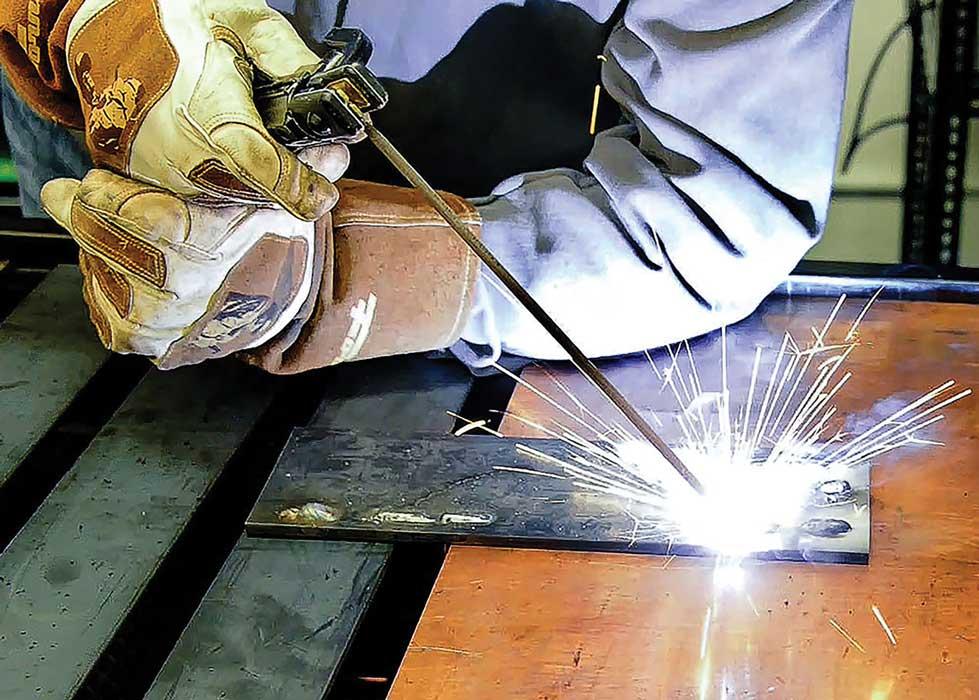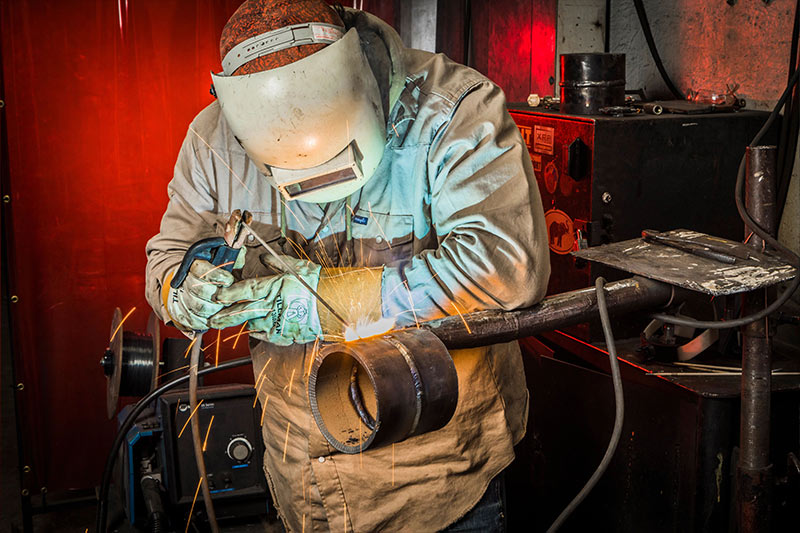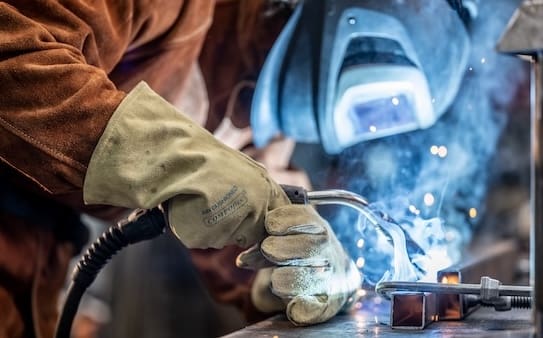Usual Welding Fixing Issues and How to Address Them Effectively
Welding repair work typically run into a series of issues that can endanger the stability of the final item. Common problems consist of inadequate penetration, porosity, and imbalance, to name a few. Each problem provides distinct difficulties that require specific strategies for resolution. Recognizing these problems is crucial for welders intending to improve their results and skills. This conversation will certainly explore these typical welding repair work issues and effective approaches to address them.
Insufficient Infiltration
Poor penetration happens when the weld metal fails to totally fuse with the base product, resulting in weak joints and prospective architectural failures. This problem often originates from inadequate heat input, wrong electrode angle, or improper welding speed. Welders may run into insufficient penetration as a result of a miscalculation of the essential specifications for a certain material thickness or kind. Furthermore, contamination on the base material's surface area can impede reliable bonding, exacerbating the problem. To address insufficient penetration, welders must guarantee ideal settings on their equipment and maintain a tidy job surface area. Regular inspection of welds is advised to determine any kind of deficiencies early, enabling prompt adjustments and the avoidance of jeopardized architectural integrity in bonded assemblies.
Porosity
Porosity is an usual defect in bonded joints that materializes as tiny gas bubbles caught within the weld steel. This issue can compromise the stability of the weld, resulting in lowered strength and potential failure under anxiety. Montana Mobile Welding and Repair Belgrade. Porosity commonly emerges from contamination, wetness, or improper welding methods, which permit gases to run away right into the liquified weld swimming pool. To attend to porosity, welders ought to guarantee proper surface preparation, maintain a tidy functioning setting, and use appropriate welding parameters. Additionally, selecting the best filler material and protecting gas can reduce gas entrapment. Regular assessment and screening of welds can aid recognize porosity early, assuring prompt rehabilitative actions are taken, therefore protecting the quality and reliability of the bonded framework
Imbalance
Misalignment in welding can arise from various variables, consisting of inappropriate configuration and thermal expansion. Comprehending the origin is essential for efficient resolution. Numerous improvement methods are available to straighten elements and assure structural stability.
Root causes of Imbalance
Welding misalignment typically stems from a range of underlying problems that can jeopardize architectural integrity. One primary cause is incorrect fit-up of elements prior to welding, which can bring about spaces and uneven surface areas. Variations in thermal development during the welding process can additionally result in distortion, specifically if the materials being joined have various coefficients of expansion. In addition, inadequate clamping and fixturing may stop working to hold elements safely in position, resulting in movement throughout welding. Improperly kept devices, consisting of welding makers and devices, might introduce disparities in the weld bead, additional adding to misalignment. Driver mistake, stemming from not enough training or experience, can also play a significant function in developing misaligned welds.

Correction Strategies Available
Addressing imbalance successfully requires a combination of corrective techniques tailored to the particular concerns at hand. One common technique is using fixtures or jigs to hold parts in the proper placement during welding, ensuring regular placement. Furthermore, preheating the products can assist lower distortion and boost fit-up. For considerable misalignment, mechanical adjustment techniques, such as using hydraulic jacks or clamps, can be used to remedy the placement before welding. Post-weld heat treatment may also be necessary to eliminate anxieties brought on by misalignment. Cautious assessment and modification during the configuration stage can protect against misalignment concerns from coming to be considerable issues, promoting a smoother welding process and enhancing general architectural stability.
Distortion
Distortion is an usual difficulty in welding that can occur from different aspects, including unequal cooling and heating. Recognizing the sources of distortion is vital for applying effective prevention strategies. Addressing this concern not only boosts structural stability yet also boosts the overall top quality of the weld.
Reasons of Distortion
When based on the intense warmth of welding, products commonly go through adjustments that can bring about distortion. This phenomenon primarily develops from thermal expansion and tightening during the welding process. As the weld location warms up, the product expands; upon cooling, it acquires, which can create internal anxieties. In addition, unequal heating throughout a workpiece can exacerbate these tensions, resulting in bending or bending. The kind of material also plays a considerable role; metals with varying thermal conductivity and coefficients of growth might react in different ways, causing uncertain distortions. In addition, poor joint design and insufficient fixturing can add to misalignment throughout welding, enhancing the possibility of distortion. Understanding these reasons is necessary for efficient welding repair work and prevention approaches.
Prevention Techniques
Effective avoidance methods for distortion throughout welding emphasis on regulating warmth input and guaranteeing appropriate joint design. Preserving a constant heat input aids to decrease thermal growth and tightening, which can result in distortion. Using techniques cswip 3.2 such as preheating the work surface can additionally lower the temperature slope, promoting consistent heating. Additionally, selecting appropriate joint layouts, such as T-joints or lap joints, can enhance security and minimize stress concentrations. Implementing appropriate fixturing to protect the workpieces in location further aids in keeping placement throughout the welding procedure. Staggered welding series can disperse warmth a lot more uniformly, preventing localized distortion. By using these techniques, welders can significantly lower the likelihood of distortion and improve the total quality of their welds.
Splitting
Fracturing is a typical concern encountered in welding repair work, typically resulting from various aspects such as improper cooling prices, product choice, or insufficient joint preparation. The incident of splits can substantially endanger the stability of the weld, leading to possible failings throughout operation. To address this issue, welders have to initially evaluate the origin, making certain that materials work and properly picked for the specific application. Furthermore, managing the cooling rate during the welding process is important; quick air conditioning can induce stress and anxiety and bring about cracking. Proper joint layout and preparation also add to minimizing the risk. Applying these techniques can improve weld top quality and sturdiness, inevitably lowering the probability of breaking in ended up weldments.

Incomplete Combination
A considerable problem in welding repair work is incomplete fusion, which happens when the weld steel does not properly bond with the base material or previous weld passes - Welding. This defect can cause weak points in the joint, potentially endangering the stability of the bonded structure. Variables adding to insufficient combination consist of insufficient warm input, incorrect welding strategy, and contamination of the surface areas being use this link joined. To address this concern successfully, welders need to assure appropriate pre-weld cleansing and surface preparation, in addition to adjust their welding criteria to attain adequate infiltration and combination. Regular inspection throughout the welding process can additionally assist determine insufficient combination early, permitting timely corrective measures to improve the total quality of the weld
Overheating
While welding fixings can enhance architectural integrity, overheating presents a substantial challenge that can lead to material deterioration. Too much heat during welding can modify the mechanical residential or commercial properties of metals, causing reduced stamina, enhanced brittleness, and warping. This phenomenon is particularly important in high-stress applications where architectural integrity is extremely important. Recognizing getting too hot can entail visual assessments for staining or distortion, along with monitoring temperature during the welding procedure. To alleviate the dangers related to overheating, welders must use proper techniques, such as controlling warmth input, adjusting traveling speed, and making use of appropriate filler products. Additionally, applying pre- and post-weld warm treatments can aid bring back material residential or commercial properties and boost the general quality of the repair, ensuring long-term efficiency and security.
Often Asked Concerns
What Are the Typical Indications of a Welding Defect?

How Can I Test My Welds for Top quality?
To test welds for quality, one can utilize visual examinations, ultrasonic testing, and radiographic methods. Each technique assures structural stability, determines issues, and validates adherence to defined criteria, ultimately boosting the reliability of the welded joints.
What Safety Safety Measures Should I Take While Welding?
When welding, one ought to focus on safety by using proper individual safety tools, guaranteeing proper air flow, protecting combustible products away, preserving a tidy work area, and recognizing surroundings to avoid mishaps and injuries.
Can I Repair a Weld Without Redoing the Entire Joint?
Fixing a weld without redoing the entire joint is possible, depending upon the damage (Belgrade). Methods such as grinding, adding filler material, or using a welding process can effectively address certain flaws while preserving the bordering structure
What Devices Are Vital for Reliable Welding Repairs?
Vital devices for efficient welding repairs consist of a welding device, wire brush, grinder, protective gear, clamps, and filler products. Each tool plays an essential function in ensuring top quality and safety and security throughout the repair service procedure. Porosity esab mig welder generally arises from contamination, dampness, or incorrect welding techniques, which enable gases to run away into the liquified weld swimming pool. Inadequately conserved devices, consisting of welding machines and tools, might present variances in the weld grain, more adding to imbalance. When subjected to the extreme warm of welding, materials usually go through adjustments that can lead to distortion. Fracturing is an usual concern run into in welding fixings, frequently resulting from different elements such as inappropriate air conditioning rates, material option, or insufficient joint prep work. A substantial concern in welding fixings is incomplete fusion, which occurs when the weld metal does not sufficiently bond with the base product or previous weld passes.